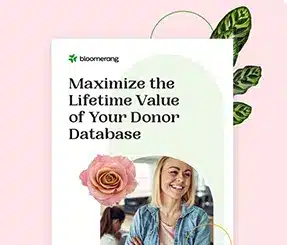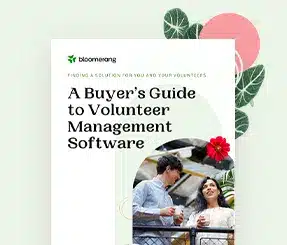[ASK AN EXPERT] Best Ways To Get Started Using Generative And Predictive AI For Nonprofits


Full Platform Overview Chat With Us



Full Platform Overview Chat With Us




Our Ask An Expert series features real questions answered by Claire Axelrad, J.D., CFRE, our very own Fundraising Coach, also known as Charity Clairity. Today’s question comes from a nonprofit employee who wants advice on how to get started with AI for nonprofits:
Dear Charity Clairity,
I know I should be using AI or ChatGPT to be more efficient in my work, but just don’t know how to get started. My boss wants us to be “cutting edge.” But, I’m a really good writer and don’t need help in that department. And I don’t think it can help me build donor relationships since it’s not human. So, do I really need it? I don’t have much time to figure this stuff out. What are the best, and easiest, ways to begin that would be worth my time investment? Any suggestions?
— Not a Techie
Dear Not a Techie,
There are plenty of ways AI for nonprofits can be helpful beyond writing. And, in fact, it can be surprisingly helpful with major donor fundraising. Today, many nonprofits are finding it to be useful in filling the role of administrative assistant or consultant – without the added overhead expense. Essentially, it can multiply the capacity of existing staff to do whatever you need to do.
The two categories of AI with which you should be familiar are predictive and generative. Of course, it’s terrific to use them together in much the same way as you may use both your math and verbal skills.
AI uses machine learning algorithms to identify patterns in data and make predictions about what should come next based on those patterns. At its simplest, it suggests what word you should type next. Still, what word you choose is still up to you. And this is the case with every AI usage today.
Predictive AI can be especially useful for mid-level and major donor fundraising. What it does is predict future actions based on historical data and patterns. This helps you understand donor behaviors and preferences, and also respond to actionable recommendations. In other words, it becomes like an in-house consultant enabling you to identify donors, create and deliver personalized touchpoints, and seamlessly integrate ongoing stewardship.
Generative AI can be used in multiple ways (beyond just writing). Some of the tasks it can automate include collecting and analyzing data, updating donor profiles, organizing incoming communications, scheduling meetings and sending reminders. You can also use it to come up with new content ideas, image captions, hashtags, post scheduling, and even to produce videos for platforms like YouTube and TikTok.
Instead of thinking about AI as a human replacement, think about it as incremental. It’s a tool you can use to eliminate your least favorite, most repetitive tasks and get more done in service of clients and mission. Let’s face it, the backbone of sustainable fundraising is relationship building. Using AI as a tool – just as you would Microsoft Word, Excel, PowerPoint, etc. – can free up time to focus on strategic planning, building trust and making personal donor connections. In other words, it can help you reframe your entire approach to your work so you prioritize the more complex, highest yielding strategies.
If you’ve used ChatGPT and found it less than helpful, it’s likely because you’ve not yet mastered the art of the prompt. It’s worth giving it another go. The folks at Momentum have put together this incredibly useful guide replete with best practices and concrete examples. There are prompts for both quick projects and larger, more robust projects. Bookmark this article, or print it out and pin it close to your desk.
Even the best writers can benefit from a tool to quickly outline the content they want to include in their appeal, thank-you letter, annual report, or other messaging. This can speed up the process, and assure you don’t leave out any important elements.
An email is useless unless it gets opened. Good prose writers are not necessarily also good advertising writers, and this is where a little AI brainstorming assist can pack a big punch. Honestly, AI is miraculous in this regard.
Busy people skim. They don’t have time to read a term paper. If you’re best at long-form writing, a tool like ChatGPT can transform your text-heavy prose into concise, reader-friendly materials. You can also prompt it to rewrite using “you” and “your” every time you’ve used “I,” “we,” “our,” or the name of your organization.
What would take you a lot of time, AI can do in a matter of seconds. If you have a report or a research paper, plugging it in to ChatGPT can transform it to a 4-page direct mail letter, a newsletter article, a series of social media posts, or an outline for a webinar. Don’t forget to prompt it to add in emotional stories to support the dry data.
Grab this free Major Gifts GPT, trained on the latest fundraising best practices, to help you brainstorm the best ways to engage with your major donors.
Let’s say you’re having an event, and don’t know all of the attendees. You can “Google” each one individually to learn more about them. But, what if you simply prompted ChatGPT or another AI tool to give you a one paragraph bio, headshot, and area of interest for each guest? You may not get comprehensive data for everyone, but it’s a good start if you want to use your event for donor cultivation.
You can actually practice a conversation with ChatGPT playing the donor, a board member, or even your boss. For example, by uploading your donor’s profile in advance, and maybe also your annual report or a few newsletters, you can prompt the AI to ask for questions about your programs. Try: “Considering this donor’s interests and history, what are some talking points I should use in my first meeting with them?” Also, “if they are skeptical, what are 6 questions they might ask, and what are 6 short answers I might offer to address their concerns?” Similarly, if you’re trying to persuade board members to buy in to a new initiative, you can upload your outline of the pros and cons and prompt the AI to turn the cons into pros.
ChatGPT can synthesize information about your organization and a funder’s preferences (i.e., a foundation, corporation, government grantor, or individual) and map one against the other. This is especially useful for responding to RFPs. You can prompt it to come up with 10 bullet points where the values you enact through your work best align with the funder’s values and any articulated funding guidelines.
FINAL THOUGHTS: AI won’t replace your human brain, but it can give it a boost. Your task is to learn how to prompt it so it helps you think as clearly and broadly as possible. And you don’t need to be a tech wizard to use it! Today, there are plenty of inexpensive (or free) off-the-shelf tools you can get that require very little training. You just need to adopt a learning mindset and commit to experimenting for a few weeks to master AI for nonprofits.
To your success!
— Charity Clairity (Please use a pseudonym if you prefer to be anonymous when you submit your own question, like “Not a Techie” did.)
How does your organization handle AI for nonprofits? Let us know in the comments.
Comments